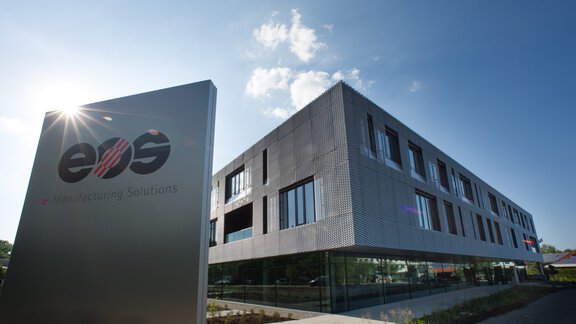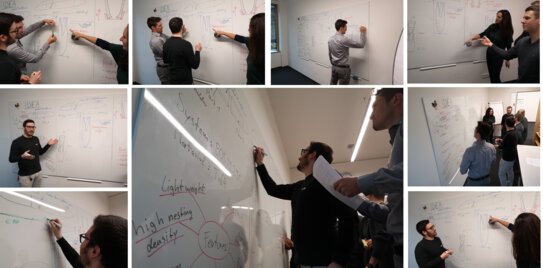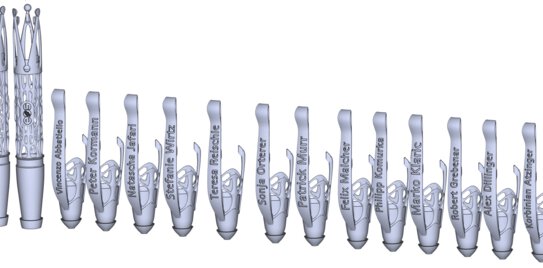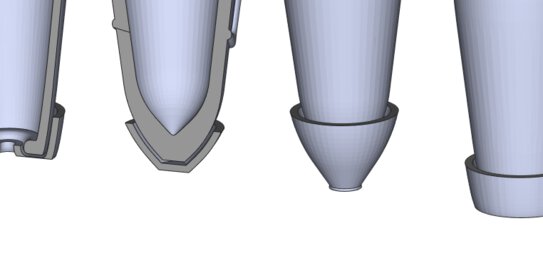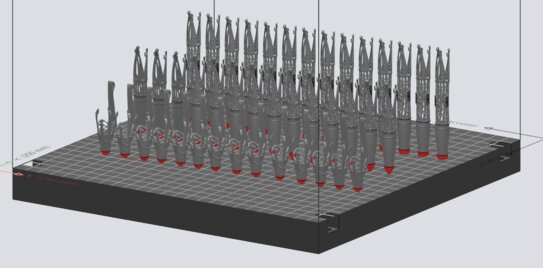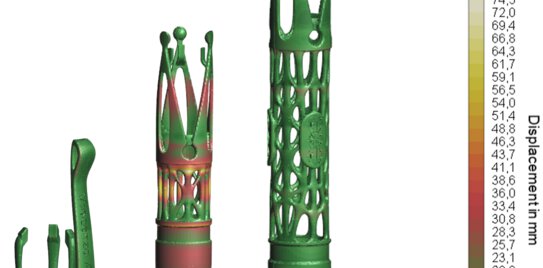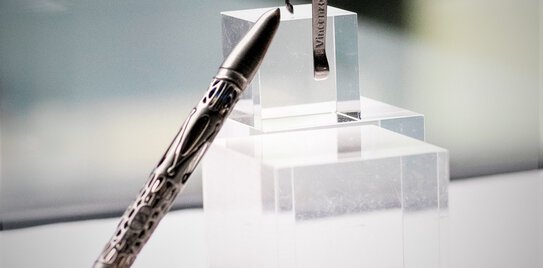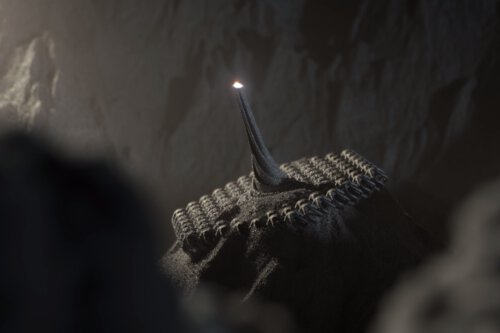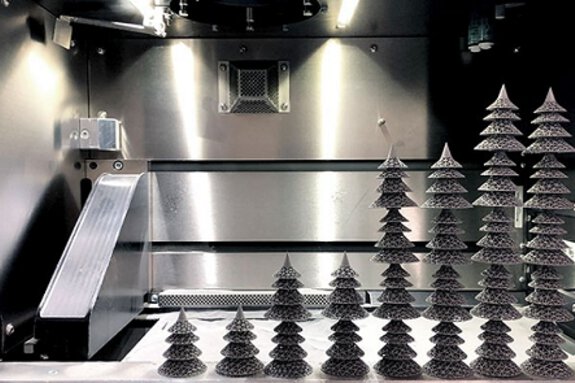How to Create Differently with DMLS®?
A Recipe to Create an Amazing Product
I will show how we designed a pen using all the benefits and freedom offered by Additive Manufacturing.
Let me give you the recipe to combine all the ingredients to print a fantastic product.
The Ingredients:
- A starting point idea
- A team thinking out of the box
- A touch of experience
- A handful of knowledge about the AM process
- An EOS M 290
- A pinch of EOS Titanium Ti64
- A bit of patience with some iteration loops (It is not easy to wait until the “cake” is ready to eat)
As usual, a vast amount of creativity is highly recommended.
Starting the design process
Sometimes the main challenge is the starting point. The same issue that you encounter with cakes: It is not easy to choose the right one amongst many possibilities – all of them look tasty.
In this particular case, the choice to design a pen came from a “casual” discussion with my colleagues. The idea was to create something familiar that we use every day, but that, at the same time, could show most of the benefits of the AM process -such as producing something with a cool design- while pushing further the boundaries of this amazing technology.
Add a touch of designing experience
When thinking about efficient ways to design this pen, AM comes in handy as it offers freedom of design. The possibility to create and produce almost any shape – no matter how complex – without the constraints of conventional manufacturing is, in fact, the ultimate dream of every designer. Bionic design is a perfect example that describes this concept.
However, this recipe is purely a design process; no optimization technique has been implemented.
Add a handful of knowledge of the printing process during the design phase
The pen consists of three different pieces: the cap and two different parts that, once assembled, form the pen’s refill housing. The design of the three parts is influenced by the printing direction: taking the shape of a pen into consideration, the best option is to print vertically. Why? To fit as many parts as possible on the building platform, thereby lowering production costs and creating the best surface quality possible. Therefore, the three parts are designed to be completely self-supported, then there is no need for a support structure.
The main challenge we had to face was to implement a “mechanism”, a functional integration for the components, in order to allow the insertion and, in the future, the replacement of the ink refill cartridge. The solution: an axial-symmetrical crown on both sides. The benefits: Easy assembly and dismantling of the pen body. This way, you can replace an empty ink cartridge and also have enough stiffness in the pen itself.
EOS Titanium Ti64 is the best candidate for this kind of application. It offers almost the same performance as stainless steel in terms of stiffness while being nearly as lightweight as aluminum. After five design loops, we came up with the final locking system. The high definition of the EOS Ti64 Performance (30 µm) process allows a perfect match between the surfaces and the strong connection of the parts. Moreover, the high definition of the process allows the implementation of logos and other types of personalization (e.g., the name of the owner or the name of a special event or anything else).
Once the design is completed, the next step is preparing the data for the printing process. The DMLS® process requires a minimum amount of support structures to secure the part to the building platform. Support structures are often necessary to successfully complete the printing process. However, they lead to the use of more material and to a longer printing and post-processing time. Moreover, the surfaces to which they are connected suffer in terms of final quality. However, it´s essential to keep the parts strongly connected to the building platform. This allows the dissipation of all the heat generated during the multiple exposure phases.
This is why we came up with the idea to develop a special kind of supports specifically for these parts called “prop-supports”. A thin shell of material is created with a small gap, which keeps them strongly connected to the building platform. A very thin layer of powder separates prop-supports from parts, ensuring high surface quality. Naturally, to find the perfect prop-support shape, the correct offset distance, and the suitable printing parameters, we ran a DoE (Design of Experiment) using EOSPRINT.
The next step is the process simulation. Thanks to software like Additive Works’ Amphyon ©, it´s possible to have a preview of the printing process. This way, you can avoid potential failures or distortion and ensure the final quality.
Print all ingredients with the EOS M 290 and wait until the job is ready
As said before, another essential step in this process is post-processing because it improves surface quality. In this case, the final decision was to use a blasting process on the parts and then polish them using a tumbling machine.
